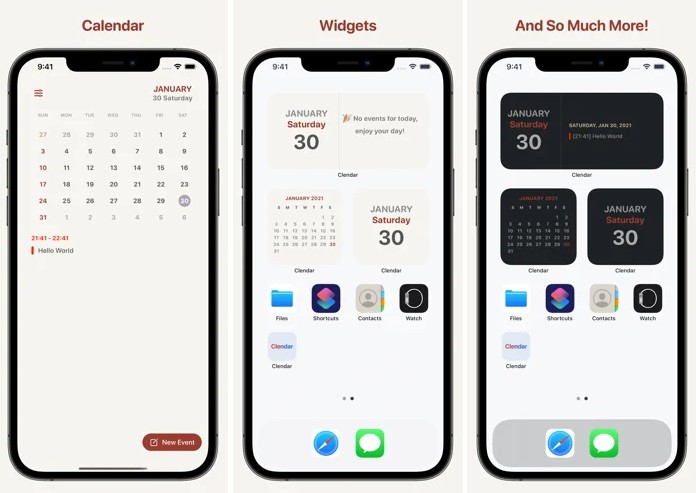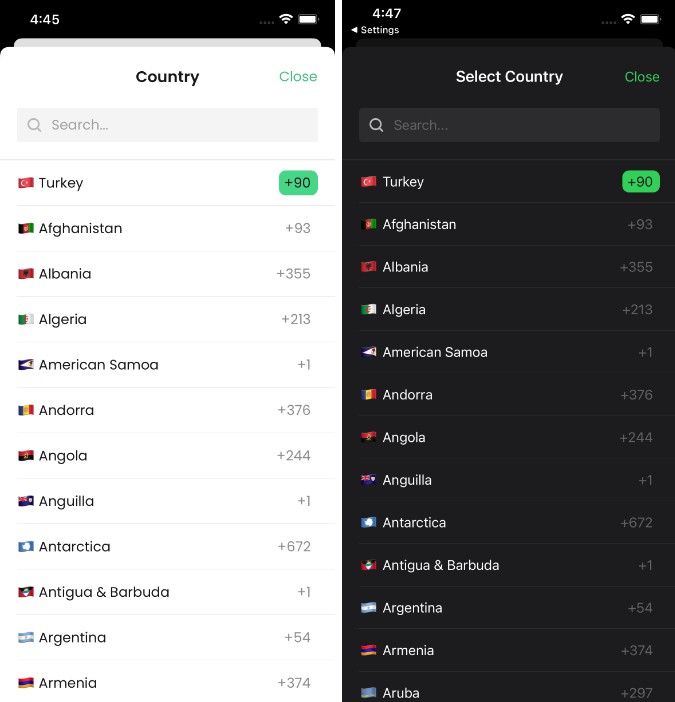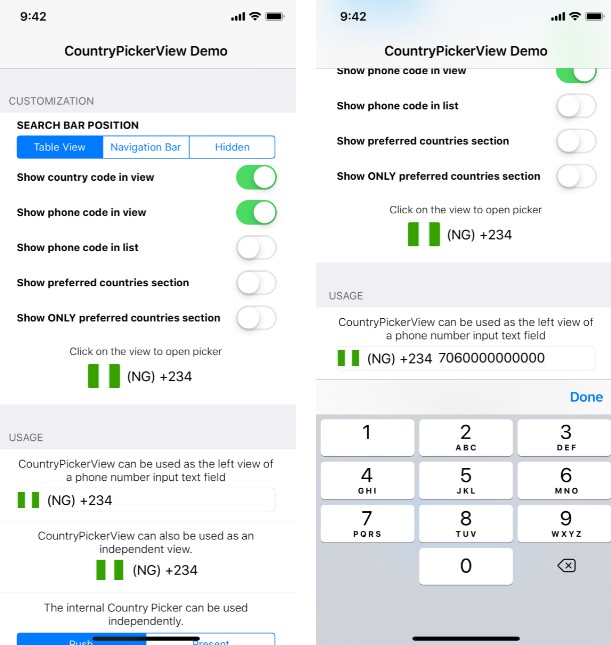Columbus
A country picker for iOS, tvOS ad watchOS with features you will only find distributed in many different country-picker implementations.
Features
- Filter countries using an as-you-type search bar - type the name or it's country code
- Quickly find a country by using the indexbar on the right
- Localized by using standard components and Apple's
Localeclass - Theme support to easily fit to your design
- Storyboard support
- Select a country from the history of selected countries -
still in progress
Installation
Columbus is compatible with iOS 11 and higher and builds with Xcode 11 and Swift 5.3+.
Carthage (recommended)
Carthage is a decentralized dependency manager that builds your dependencies and provides you with binary frameworks. To integrate Columbus into your Xcode project using Carthage, specify it in your Cartfile:
github "Blackjacx/Columbus"
The use the following command to build the XCFramework:
carthage bootstrap --use-ssh --use-xcframeworks --cache-builds
Using Carthage has some advantages in contrast to Cocopods for this framework. Since it needs to compile the asset catalog for over 200 flag assets it is much faster to build the framework once using Carthage and drop it into your app. If you use Cocoapods the asset catalog is compiled together with Columbus each time you do a clean build and probably also when Xcode thinks Columbus needs to be compiled again.
CocoaPods
To install via CocoaPods, simply add the following line to your Podfile and run pod install to install the newest version:
pod "Columbus"
Examples
Usage
In the following example you'll find all the possible configuration/theming options of Columbus:
struct CountryPickerConfig: Configurable {
var displayState = CountryPickerViewController.DisplayState.countryCodeSelection
/// In this example this has to be a computed property so the font object
/// is calculated later on demand. Since this object is created right at app
/// start something related to dynamic type seems not to be ready yet.
var textAttributes: [NSAttributedString.Key: Any] {
[
.foregroundColor: UIColor.text,
.font: UIFont.preferredFont(forTextStyle: .body)
]
}
var textFieldBackgroundColor: UIColor = .textFieldBackground
var backgroundColor: UIColor = .background
var selectionColor: UIColor = .selection
var controlColor: UIColor = UIColor(red: 1.0 / 255.0, green: 192.0 / 255.0, blue: 1, alpha: 1)
var lineColor: UIColor = .line
var lineWidth: CGFloat = 1.0 / UIScreen.main.scale
var rasterSize: CGFloat = 10.0
var separatorInsets: UIEdgeInsets {
UIEdgeInsets(top: 0, left: rasterSize * 4.7, bottom: 0, right: rasterSize * 2.5)
}
let searchBarAttributedPlaceholder: NSAttributedString = {
NSAttributedString(string: "Search",
attributes: [
.foregroundColor: UIColor.placeholder,
.font: UIFont.preferredFont(forTextStyle: .body)])
}()
}
let countryPicker = CountryPickerViewController(config: CountryPickerConfig(),
initialCountryCode: "US") { (country) in
print(country)
}
present(countryPicker, animated: true)
Storyboards
Good news for our storyboard users. I implemented full storyboard support - but for iOS 13 only. You'll need a fallback for earlier versions. To instantiate the picker from a storyboard you can use the following example:
if #available(iOS 13.0, *) {
let defaultCountry = CountryPickerViewController.defaultCountry(from: "US")
let picker: CountryPickerViewController = storyboard.instantiateViewController(identifier: "Picker") { (coder) -> CountryPickerViewController? in
return CountryPickerViewController(configcoder: coder, initialCountryCode: defaultCountry.isoCountryCode) { (country) in
print(country)
}
}
} else {
// Fallback on earlier versions
}
The above example gives you a non-optional instance of CountryPickerViewController. This new syntax also enables us to provide parameters for a storyboard-initialized view (controller). This prevents the addition of optional properties like in previous versions of iOS which is a huge progress.
iOS
The repo includes an example project. It shows the main use case of the project - the country picker. To run it, just type pod try Columbus in your console and it will be downloaded and opened for you. The following set of screenshots highlights the key features unique to Columbus:
| Filtering | Indexbar | History | Localization | Theming |
|---|---|---|---|---|
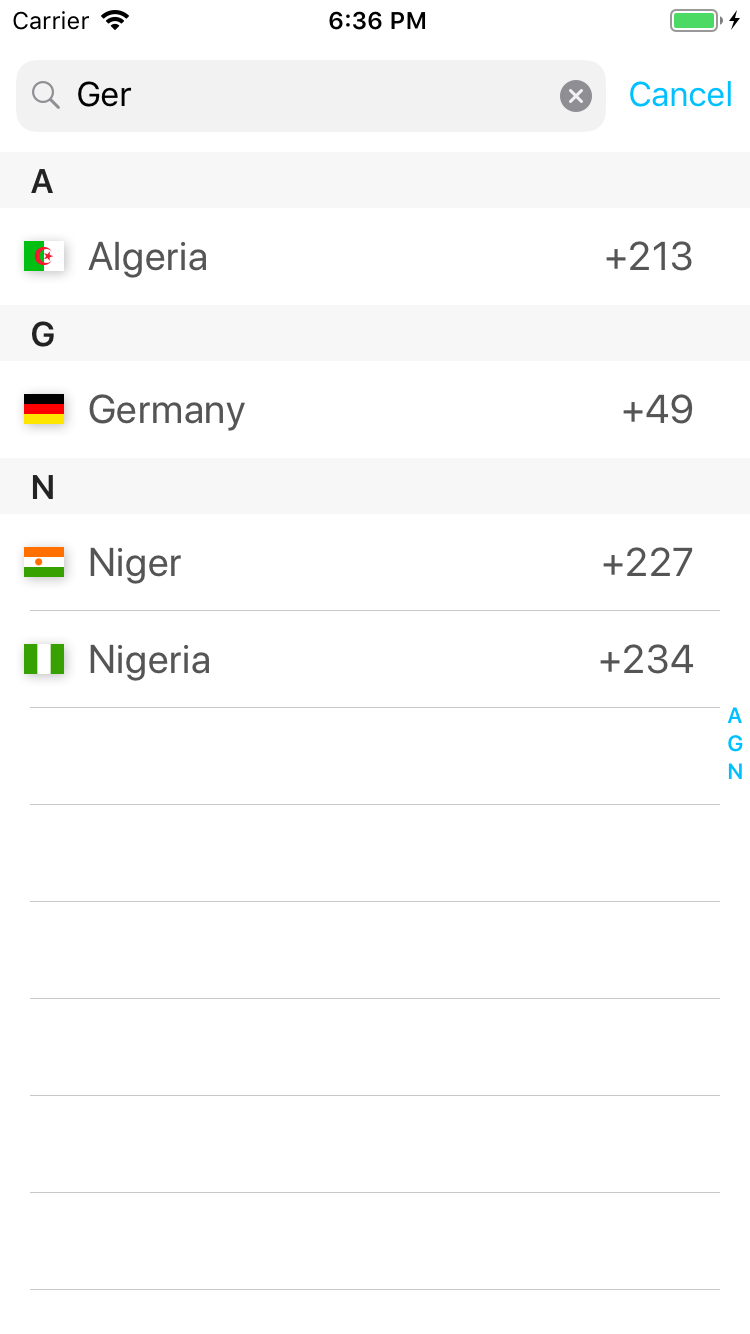 |
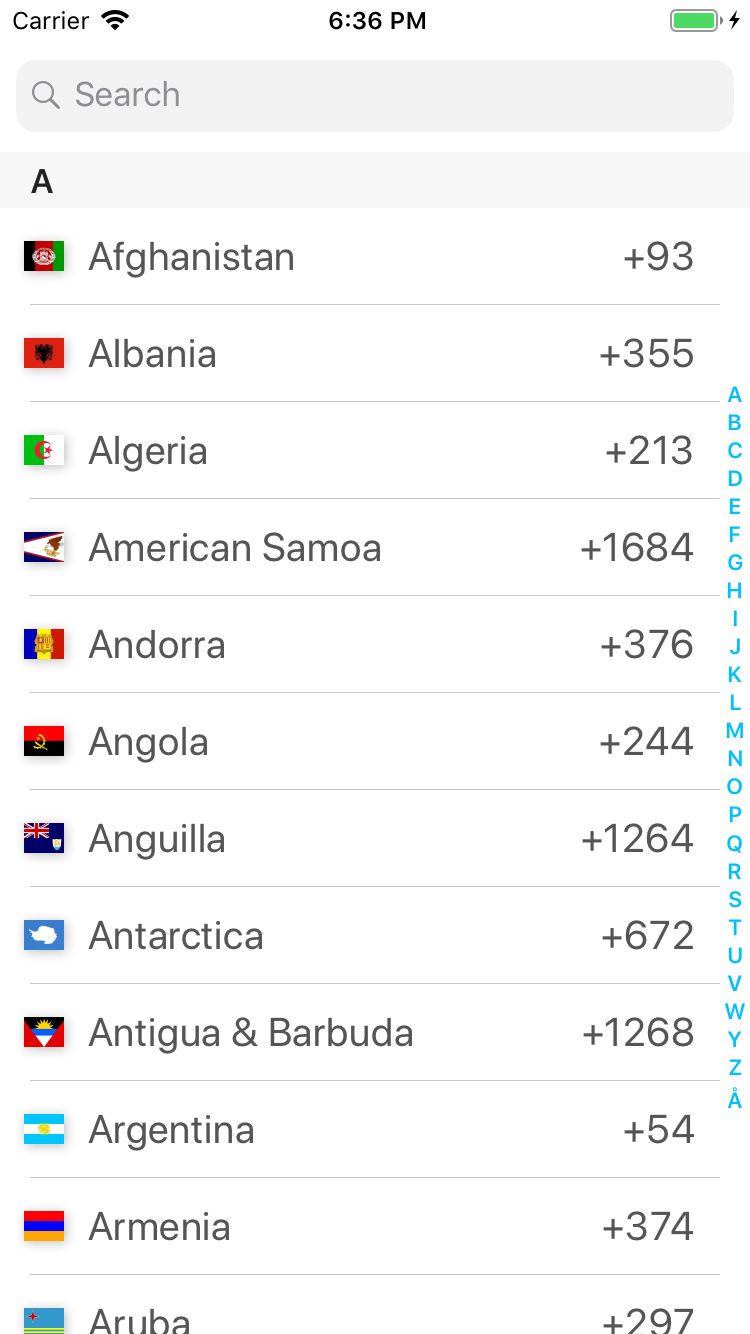 |
 |
 |
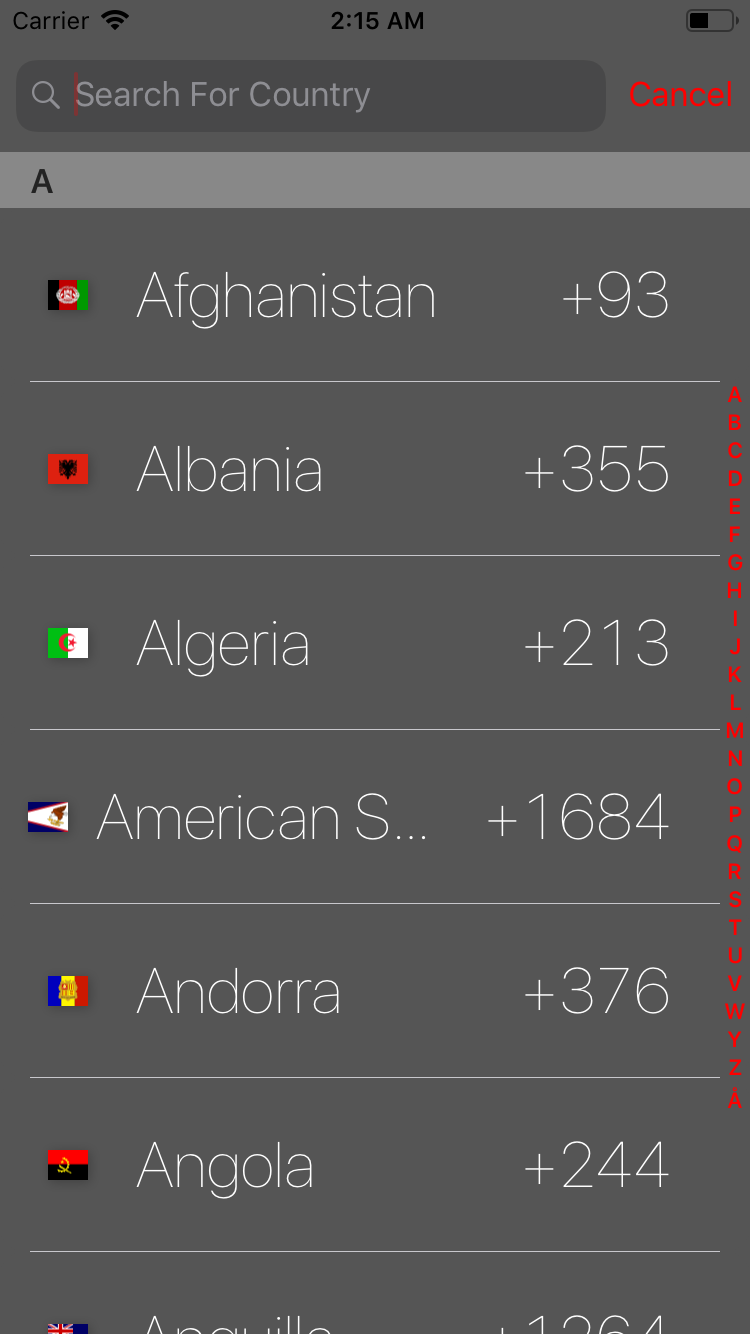 |

